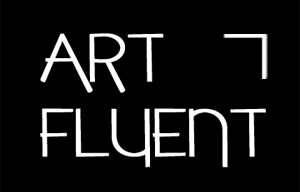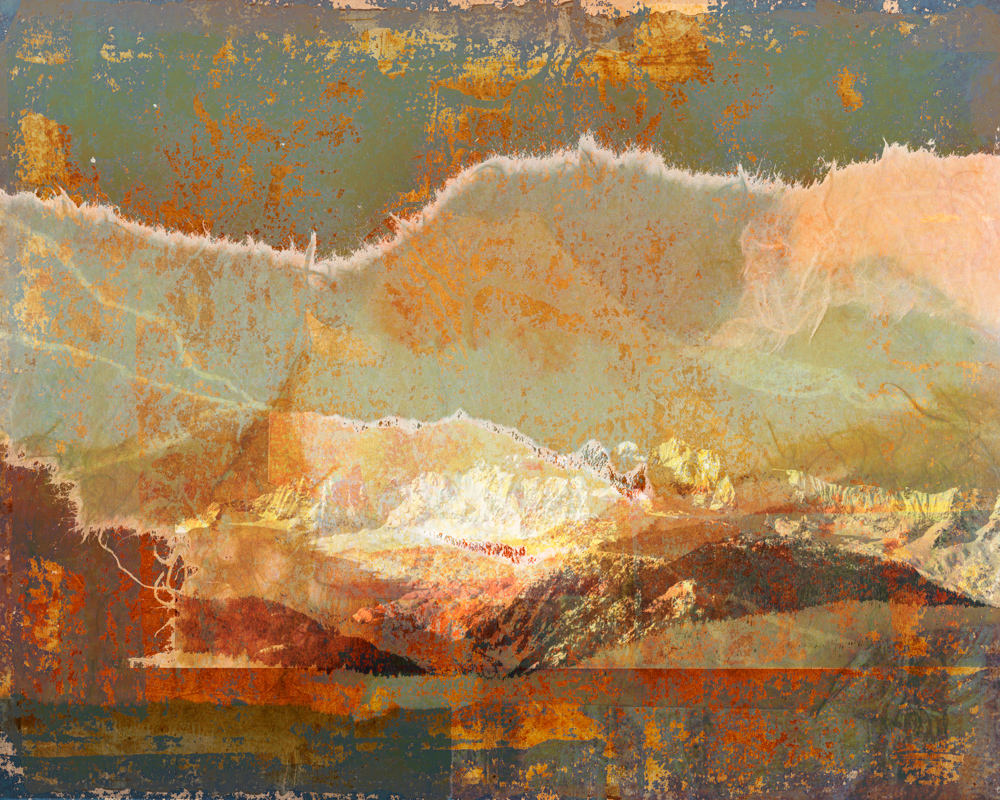
-Liz, we'd love to hear your story and how you got to where you are today, both personally and as an artist.
I had a lot of encouragement early on to explore art, but self-doubt, that old annoyance, convinced me there were better options, that I wasn’t good enough. In high school, with an amazing art teacher, there were several students better than me. I chose the safe & sensible plan of a technical degree, and fit art in as elective classes. If the high school buddies were good, well, university-level talent blew me away! The technical degree brought me to a job on the West Coast, very exciting. But without making time for art, I was missing part of myself; one of those high school art buddies reminded me of that, and I started looking for classes and ways to add art back in, to remind myself that I was more than the tech career that had taken over my life. I’m grateful for those pushes into art, both early and later on, and now I feel I’ve grown comfortable with the role of artist, at long last.

-What did it take to find and own your voice in your art?
In a practical sense, it takes time and money. My technology career helped build a buffer, for which I’m grateful. And it was an exciting time to be in technology, as it exploded. Thinking back, I wish I’d included a daily art practice sooner, as even five minutes in that brain state is wonderful.
When I started adding art back into the balance of my life, I took local classes, explored mediums, tried techniques and compositional ideas, and then I hit a slow spot. Somewhere in there, I had the idea to finally try to figure out Photoshop, which always felt intimidating. But like any other method, it doesn’t feel that way after, oh, at least a year? Once I added a technical element to my visual exploration, I started to feel like I was onto something that was very much me: handmade, yet collated and refined digitally, not any one medium but many.

-What are the questions that drive your work?
I started by looking at what I could abstract: is this ONE tree or ANY tree? At first, layering textures over photographs was enough, and it’s a comfort I return to still.
That layering process has progressed to a quest for a more pared-back, conceptual look: where is my personal boundary for minimalism? In my previous career as a technical editor, the line was much more obvious — just enough to get the message across clearly. With art, I find the question much more delicious to explore. The texture layers have been augmented by encaustic scans, analog collage, and mark-making with paint and pens, all great to obscure even more of the underlying composition. Worst case, if I’ve gotten beyond what the undo button can help with, maximalism ensues, and I try again!
I also keep digging into what keeps drawing me to some compositional structures over others. A landscape format, that idea of the horizon, with just a bit of detail along a line — what is it about that? Is it the tantalizing future? Or is it behind me, the record of what I’ve managed to unlearn? Another structure I find compelling is the grid. Is that my urge to categorize and organize? And what happens when I just try to listen to my gut? Working that balance of chance and purpose is a dance I’ll be doing for a long time.
The process of art-making, and the pursuit of those questions, is really a search for self, as I’m not the first to notice. Who am I, and what speaks strongly to me, are the powerful underlying guides as I try, try again.
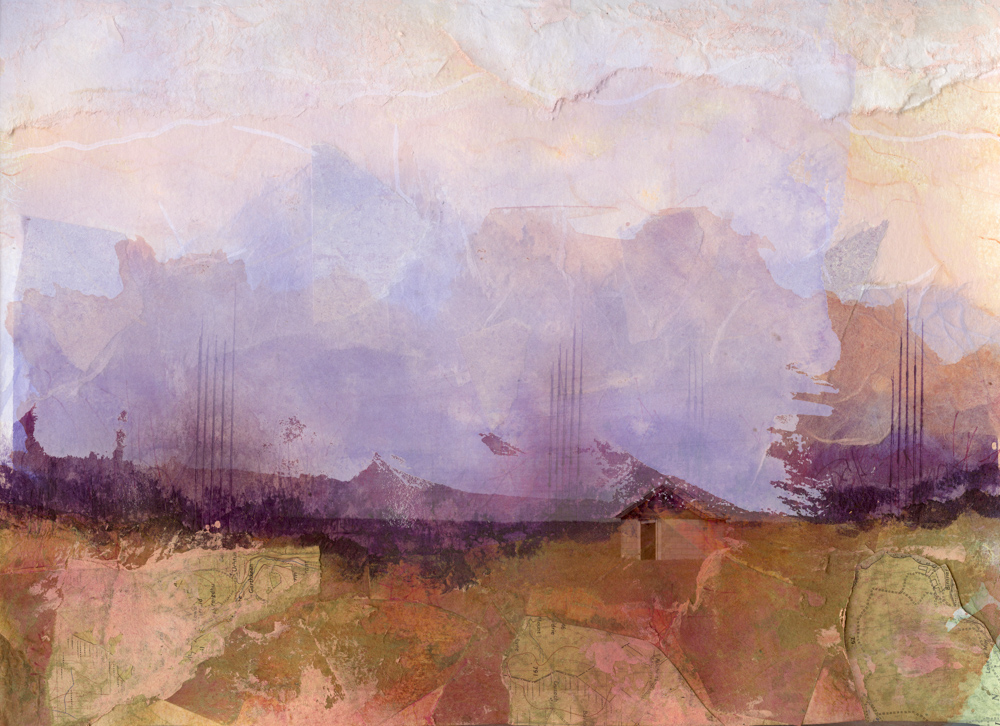
-As artists, we have all gone through waves of creative blocks. How have they appeared for you, and how have you moved past them?
The sheer volume of inspiring imagery out in the world is staggering. Staggering!! How I can ever hope to add to the pile, or reach anyone, hits me hard on a rough day. The impact of that realization points out to me that the goal of art is not just to create, as lovely a flow state as I might get into. It’s to have that conversation with another viewer — do you see it too, we ask? When I can’t take any more input, I retreat to a comforting process, like adding texture to a recent photo, or even prior to that, adding to my stock of photos, or making marks with paint and pencils. Anything goes, for collage fodder, or for scans that become layered textures. It’s like keeping the engine running, rather than a full stall. And sharing the dips, as well as the works I love, helps tremendously.

-What’s the best way for someone to check out your work and provide support?
Where to be online, to find other artists, has gotten a bit of an upheaval recently, but websites still work! I’m pleased with the depth of articles I’ve written over time on my site, to deconstruct my process, and I welcome comments on them, or on any art post.
From a supportive sense, it really helps to find and talk to others in the same boat. Early on, that came from classes, local art centers, and community art walks. Now, I delight in the world of artists I can connect with through my keyboard.
As I start the new year, I’m settling down into Mastodon as a supportive community, with Instagram a continued source of inspiration. And I put bursts of comforting work onto Redbubble for print-on-demand needs. Here are some of my current spots:
But with my tech background, I must confess, I’ll probably try any new platform that comes along, to see if it’s a fit. Luckily, with my French-Canadian name, I’m easily found. I’d love to meet other artists who are working with blended media and asking themselves similar questions.
Statement
My work investigates our surroundings and how they interact with memory, permanence, change, and regrowth. How do we process our sense of place and the collective memories that go with it, even as it changes? What of all the people before us who’ve stood in the same place — did they wonder as I do, whether they were here to stay?
By capturing images and layering collage elements, I create abstracted viewpoints that explore timelessness, familiarity, and recognition. Individual elements and marks, specific to a time and place, are obscured by layers of paper and texture, asking you to come with me on a journey of recognition as we all try to find our place in the world.
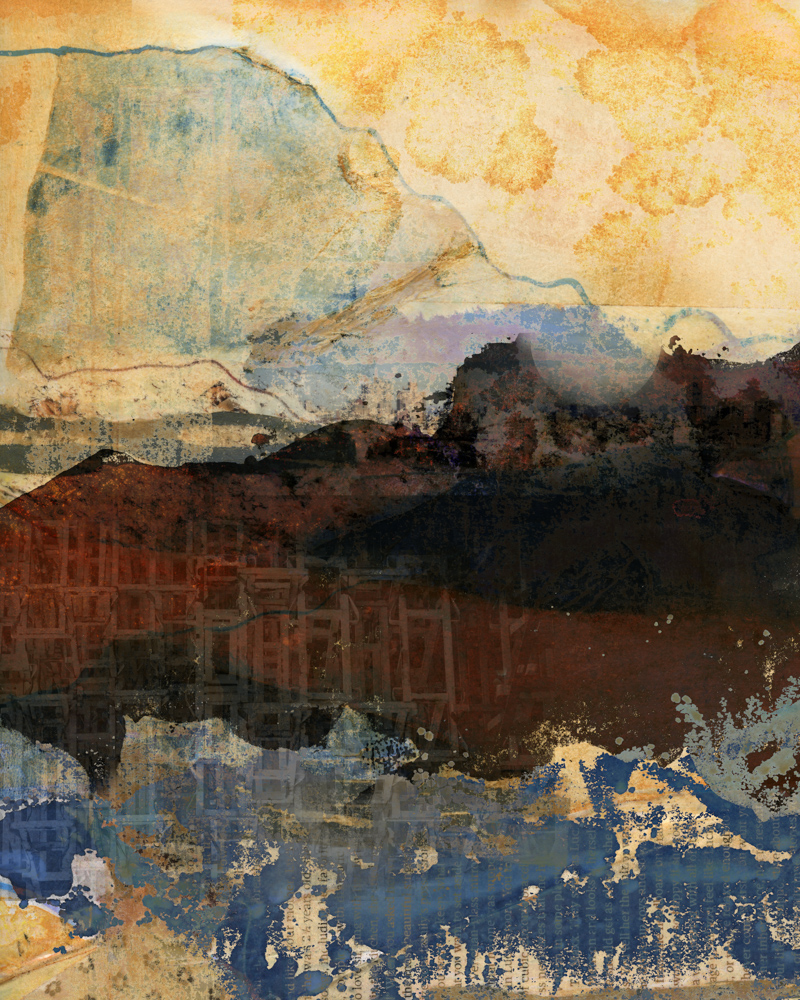
Bio
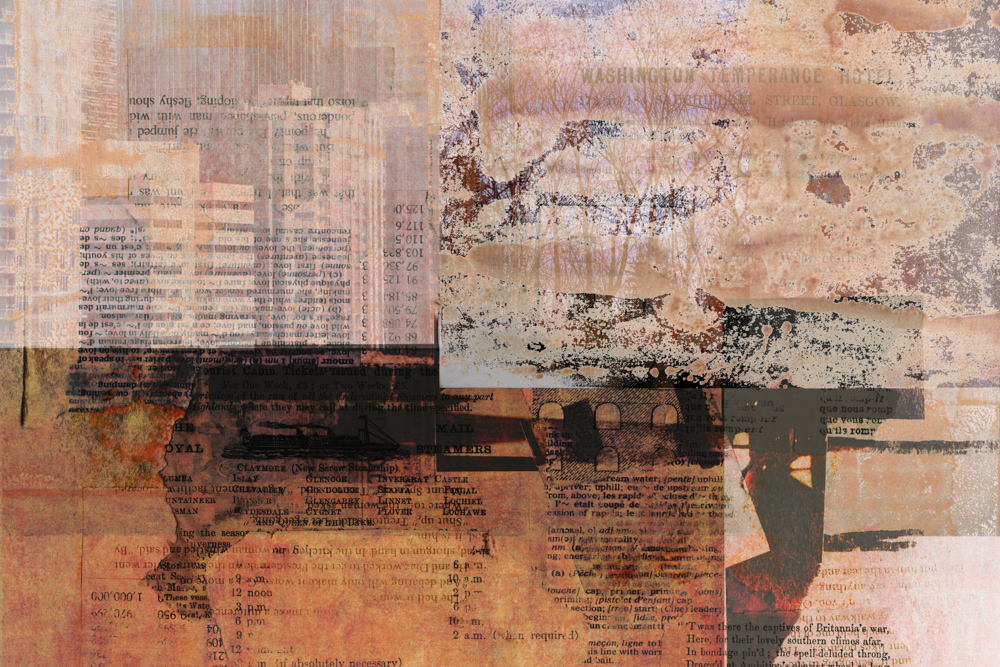
Liz Ruest is a Canadian artist who’s been living near Seattle since 1990. She grew up in rural Ontario, near the national capital, Ottawa, surrounded by farmland horizons and an extended French-Canadian family, but with easy access to the National Gallery and its excellent Group of Seven collection. Brought to the West Coast by technology, she stayed for the weather, mountains, and water.
Moving west, and across the border, was a subtle, but significant change, and suddenly her French-Canadian genealogy and love of the long horizon became touchpoints to connect with home, as she reignited artistic pursuits. Explorations in printmaking, photography, and encaustic layering became a way to build up a story of fragments of her life, and to abstract it to the immigrant’s journey.
Liz’s medium of digital collage gives her an efficient way to access varied elements of a story, and quickly test compositions, while building up multiple layers of color and texture over time. She creates themed bodies of work, documented on her site, lizruest.com. Her work has been shown and collected internationally. You can find her work at Lynn Hanson Gallery in Seattle’s Pioneer Square, and a curated selection of open-edition work online at redbubble.com.
